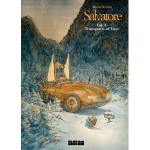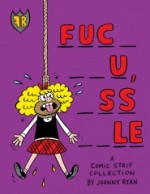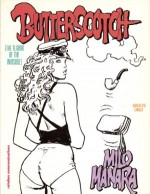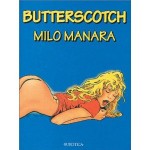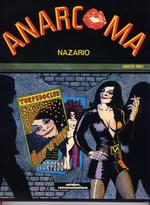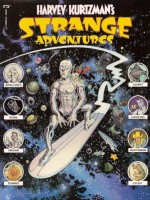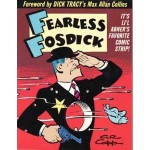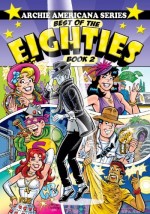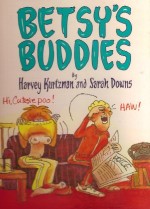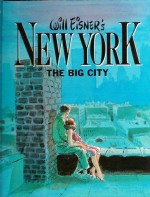
By Will Eisner (Kitchen Sink Press)
ISBN: 0-87816-020-5 Â Hardcover: 0-87616-019-1
William Erwin Eisner was born in 1906, on March 6th in Brooklyn, and grew up in the ghettos of the city. They never left him. After time served inventing much of the visual semantics, semiotics and syllabary of the medium he dubbed “Sequential Art†in strips, comicbooks, newspaper premiums and instructional comics he then invented the mainstream graphic novel, bringing maturity, acceptability and public recognition to English language comics.
In 1978 a collection of four original short stories in comics form released in a single book, A Contract With God and Other Tenement Stories. All the tales centred around 55 Dropsie Avenue, a 1930’s Bronx tenement, housing poor Jewish and immigrant families. It changed the American perception of cartoon strips forever. Eisner wrote and drew a further 20 further masterpieces opening the door for all other comics creators to escape the funnybook and anodyne strip ghettos of superheroes, funny animals, juvenilia and “family-friendly†entertainment. At one stroke comics grew up.
Eisner was constantly pushing the boundaries of his craft, honing his skills not just on the legendary Spirit but with years of educational and promotional material. In A Contract With God he moved into unexplored territory with truly sophisticated, mature themes worthy of Steinbeck and F. Scott Fitzgerald, using pictorial fiction as documentary exploration of social experience.
Restlessly plundering his own childhood and love of human nature as well as his belief that environment was a major and active character in fiction, in the 1980s Eisner began redefining the building blocks unique to sequential narrative with a portmanteau series of brief vignettes that told stories and tested the expressive and informational limits of representational drawings on paper.
In New York the Big City he took nine themes pertaining to life in the Big Apple and pictorially extemporised combining drama, comedy, politics, adventure and fantasy: producing urban art-music from Blues to Punk, Soul to Ragtime and Gospel to sweet, hot Jazz – all with a pencil and brushes.
Many of these enticing, entrancing micro-plays are silent; but whenever necessary and apropos Eisner’s ear for idiom and inflection made miracles and his affection for the ambient sounds of the streets always underscores the harsh, happy and wholly immersive experience of living for The City.
Delivered in monochrome line and seductive grey wash tones the impressionistic voyage begins with ‘The Treasure of Avenue ‘C’‘ which explores the all-encompassing maw that is a street grating with ‘The Ring’, ‘The Money’, ‘The Weapon’, ‘The Key’ and the connective punch-line ‘The Treasure’. ‘Stoops’ similarly examines the lives that pass before the ubiquitous front steps of tenements, beginning with ‘Witnesses’, ‘Supper Time’ and ‘Home’ before concluding with a description of ‘Stoopball’.
Each individual section is preceded by a moving and expressive tone-painting of the unmistakable cityscapes, and none more powerful than the view from an “El†train that introduces ‘Subways’. Included are ‘An Affair on the BMT Local’, ‘Theater’, ‘Art’, ‘Night Rider’, ‘Blackout’ and ‘The Last Man’. Wherever people congregate there is ‘Garbage’ and Eisner’s sly, witty but compulsively human commentary comprises a look at ‘Cans’, ‘Trash’, ‘The Source’ and ‘Waste’ whilst ‘Street Music’ more closely scrutinises the makers of the messes in ‘Love Song Fortissimo’, ‘Pianissimo’, ‘In Concert’, ‘Opera’, ‘Aria’, ‘Decibel’ and the hilarious ‘Rhythm’.
‘Sentinels’ tackles the monuments of street furniture with ‘Hydrant’, ‘Wayside’, ‘Fountainhead’, ‘Fire Alarm’, ‘Mailbox’, ‘Dead Letter’, ‘Last Minute Mail’, ‘Signal’, ‘Lamppost’, ‘Ringeleivio’, ‘Sewers’ and ‘The River’ whilst ‘Windows’ uncovers all the world’s secrets with ‘A View of Life’, ‘Crows Nest’, ‘Observer’, ‘Fire Exit’, ‘Privacy’, ‘Disposal’, ‘Peeper’, ‘Prisons’, ‘Worm’s Eye View’ and the powerfully evocative ‘Sermonette’.
‘Walls’ are everywhere and here they describe ‘Space’, define ‘Freedom’, delineate a ‘Maze’ and ‘Man’s Castle’, act as a ‘Bulletin Board’ and offer ‘Enclosure’ and ‘Escape’. Moreover ‘Walls Have Ears’, promote another kind of ‘Privacy’ and provide a unique ‘Backdrop’, before re-enacting ‘Jericho’ and becoming ultimately the ‘Last Frontier’.
In NYC everything revolves around ‘The Block’; it is ‘The Old Neighborhood’, home of the ‘Neighborhood Girl’ from ‘Our Block’ on ‘The Good Street’ where ‘Aliens’ get a particular welcome. Eventually though, the homeliest slum inevitably becomes a ‘High Rent District’ and even ‘The Belmont Avenue Gang’ has to yield to the inexorable force of ‘Gentrification’…
Eisner’s elegiac fascination with city life, deep empathy with all aspects of the human condition and instinctive grasp of storytelling produced here another magnificently mortal and compellingly mundane melodrama, moving and uplifting and funny and deeply, wistfully true.
You’ll laugh, you’ll cry, you’ll be amazed…
As ever the Medium is the Message, especially when the artefact is such a substantially solid tome delivering comics gold in beguiling, incisive black and white – and once again I’m smugging it up because my hardcover with tipped in illustrative plate has proved to have been well worth the initial investment as Will Eisner’s New York the Big City is a veritable cartoon touchstone of all that’s best about the art of cartooning.
Whether it’s your first or ten thousand and first time of reading, this is a tome every comics aficionado will treasure forever, so any edition you can get, you really, really must…
Art and story © 1981, 1982, 1983, 1986 Will Eisner. © 1986 Kitchen Sink Press. All Rights Reserved.

